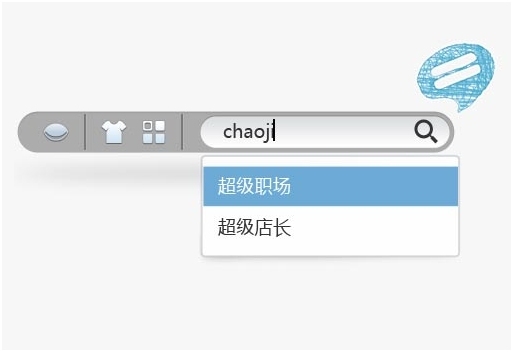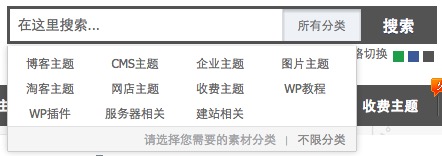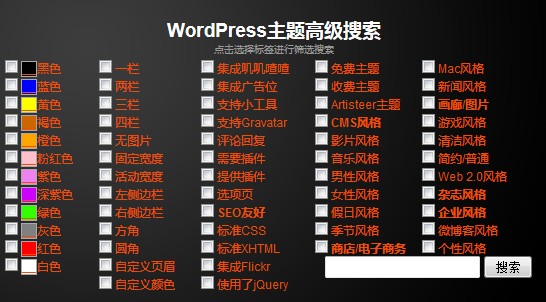我们都知道,wordpress的搜索功能并不强大,但是时至今日也没有看到wordpress在搜索上的改进,如提供分类搜索,标签搜索,自定义文章类型等这些有用的选项。因为每次搜索都要全部搜索一下,实在是没有必要。那么有没有办法实现这样的自定义的高级搜索呢?方法是有的。今天我要介绍一个更加简单的方法。那就是使用插件来实现。这款wordpress插件叫Facetious。
一、Facetious插件介绍
Facetious允许我们直观的添加一个高级搜索功能,并且使用侧边栏来展示wordpress搜索框 ,其功能包括:
- 分类 (标签, 分类目录和自定义文章分类)
- 按月
- 搜索输入盒
并且可以限制文章类型。
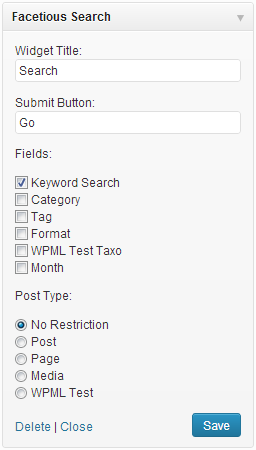
我们可以看到简单的选项,依次为小工具标题,搜索按钮文本,显示字段,文章类型设置等。
二、如何使用Facetious添加wordpress高级搜索功能
首先你需要下载Facetious,通过官方地址http://wordpress.org/plugins/facetious/或使用wordpress后台插件直接搜索安装。安装之后激活,把它放在侧边栏小工具区上即可显示wordpress高级搜索功能。这里需要说明一下:这个侧边栏小工具不一定就是在左边或右边,你完全可以把其自定义在任何一个位置。
那么如何把高级搜索功能放在wordpress主题模板呢呢?
Facetious提供了一个语法,如下:
do_action( ‘facetious’, $args );
‘$args’是数组变量:
submit -字节变量,提交按钮文本。echo – 布尔 – 是否表单输出。class – 字节 – 表单名类。id – 字节 – 表单ID属性。fields – 数组 – 显示字段列表。
下面是示例:
<?php
do_action( 'facetious', array(
'submit' => '搜索',
'fields' => array('s','custom_tax_1' => array(
'label' => '选择选项',
'class' => 'my_tax_class',
'id' => 'my_tax_id',
'all' => 'All terms'
),'custom_tax_2','m')
)
);
?>
三、Facetious前台外观展示
垂直展示:
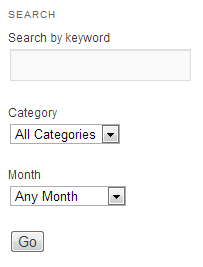
这是默认展示。
水平展示:

这个展示需要重新定义css,你可以把下面的代码放大你的主题样式里:
#facetious_form {
background:#f4f4f4;
padding:10px;
border:1px solid #ccc;
margin-bottom:1em;
overflow:auto;
}
#facetious_form select {
width:auto;
}
#facetious_form select,
#facetious_form input {
font-size:1em;
}
#facetious_form p {
float:left;
margin:0 5px 0 0;
}
#facetious_form .facetious_submit {
float: right;
margin-top: 2em;
}
.facetious_submit_button {
background-color:#981e32;
background-repeat:repeat-x;
filter:progid:DXImageTransform.Microsoft.gradient(startColorstr="#c32640",endColorstr="#6e1524");
background-image:-khtml-gradient(linear,left top,left bottom,from(#c32640),to(#6e1524));
background-image:-moz-linear-gradient(top,#c32640,#6e1524);
background-image:-ms-linear-gradient(top,#c32640,#6e1524);
background-image:-webkit-gradient(linear,left top,left bottom,color-stop(0%,#c32640),color-stop(100%,#6e1524));
background-image:-webkit-linear-gradient(top,#c32640,#6e1524);
background-image:-o-linear-gradient(top,#c32640,#6e1524);
background-image:linear-gradient(#c32640,#6e1524);
border-color:#6e1524 #6e1524 #981e32;
color:#fff!important;
text-shadow:0 -1px 0 rgba(0,0,0,0.33);
-webkit-font-smoothing:antialiased;
padding:2px 5px;
}
.facetious_submit_button:hover {
background-position:0 0;
background-color:#701;
background-repeat:repeat-x;
filter:progid:DXImageTransform.Microsoft.gradient(startColorstr="#ad001a",endColorstr="#47000a");
background-image:-khtml-gradient(linear,left top,left bottom,from(#ad001a),to(#47000a));
background-image:-moz-linear-gradient(top,#ad001a,#47000a);
background-image:-ms-linear-gradient(top,#ad001a,#47000a);
background-image:-webkit-gradient(linear,left top,left bottom,color-stop(0%,#ad001a),color-stop(100%,#47000a));
background-image:-webkit-linear-gradient(top,#ad001a,#47000a);
background-image:-o-linear-gradient(top,#ad001a,#47000a);
background-image:linear-gradient(#ad001a,#47000a);
border-color:#47000a #47000a #701;
}
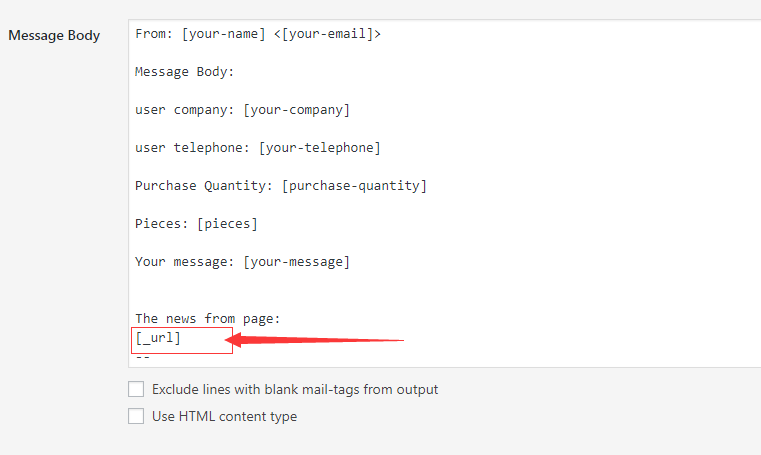

 哈勃私语
哈勃私语


